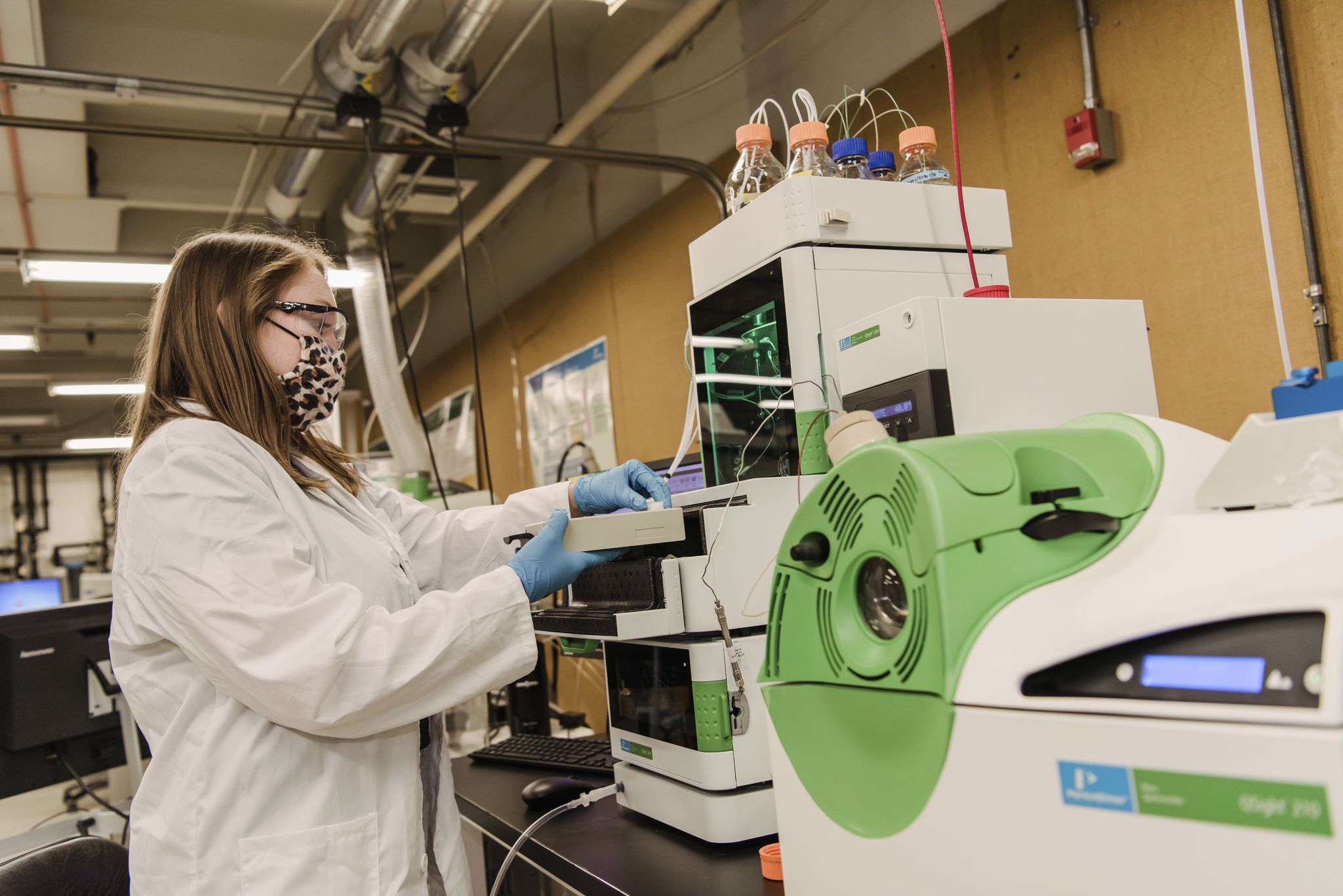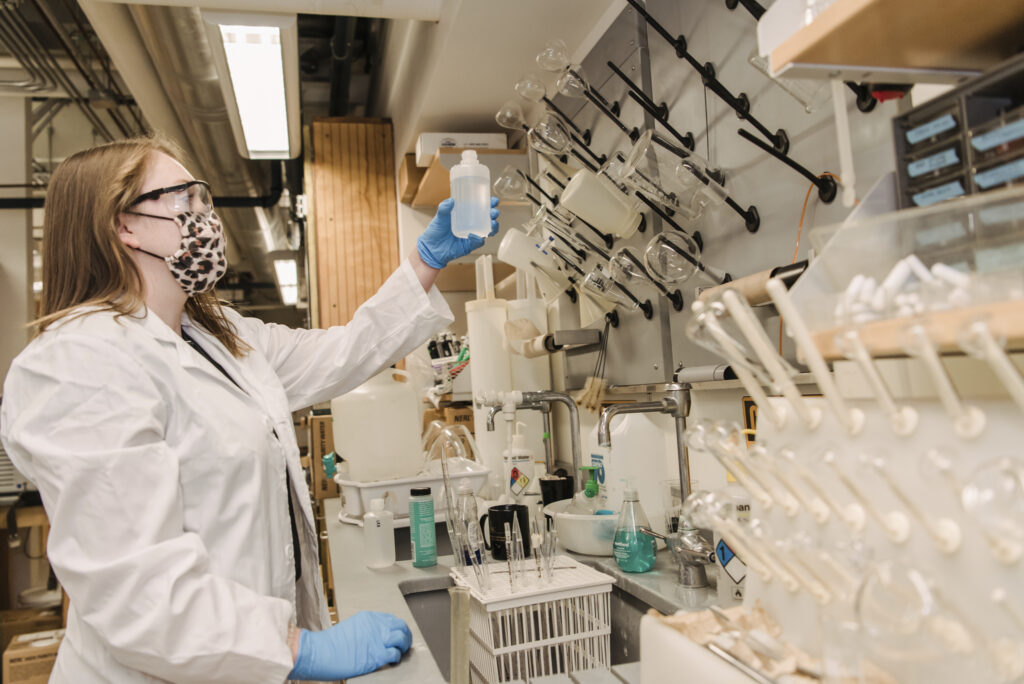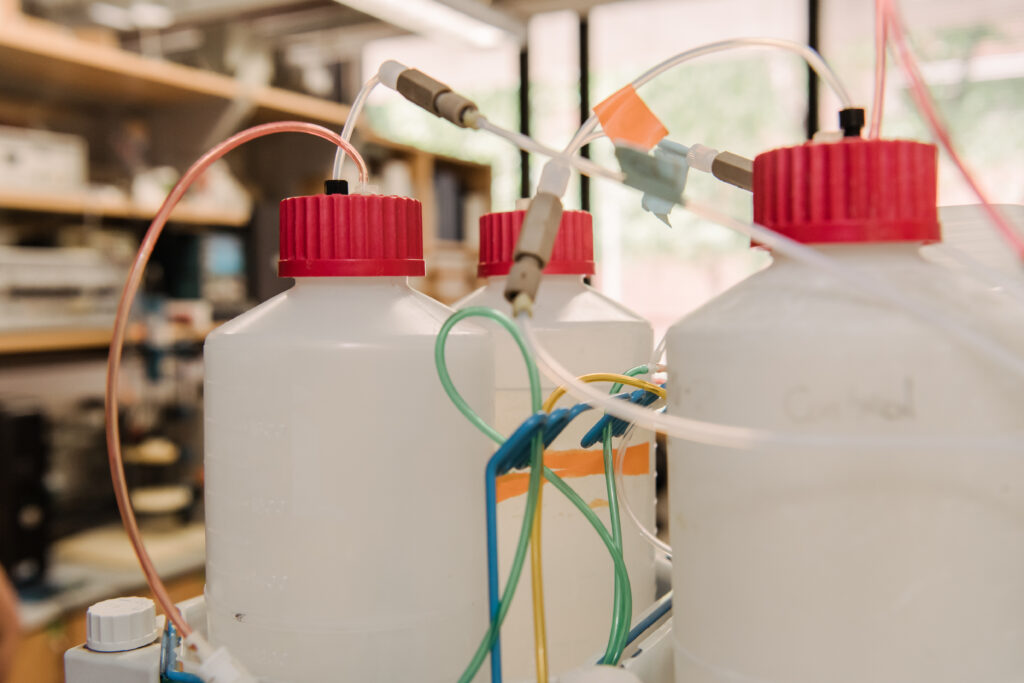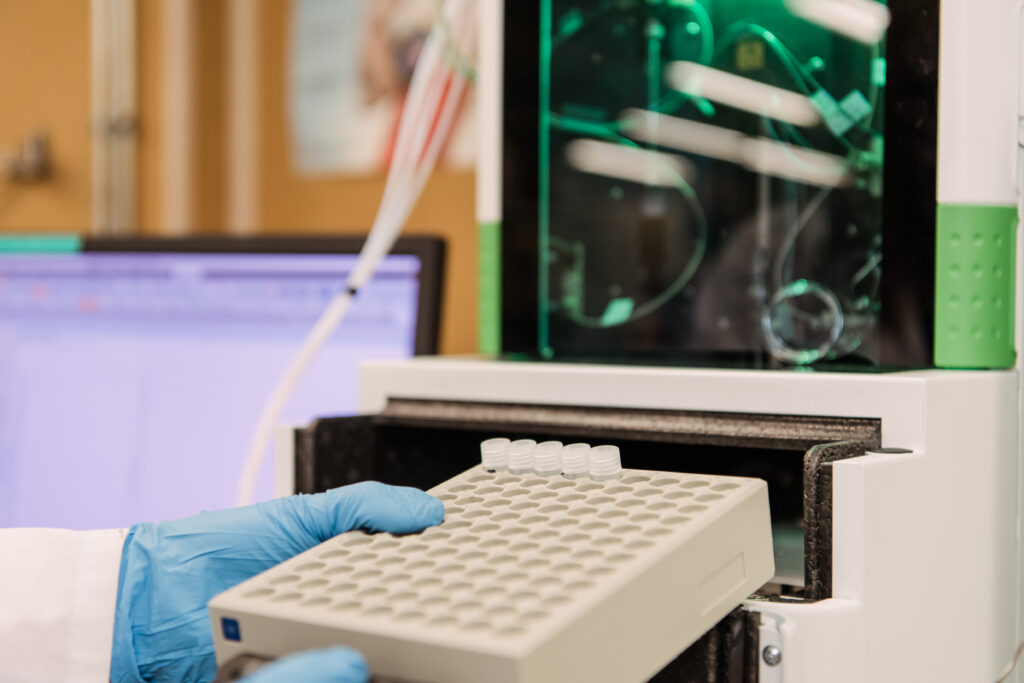One Halloween evening, a young Amanda Belunis watched her dad arrange dry ice in the kitchen sink. Belunis and her brother thought the chilling fog spilling from the countertop was awesome. Now a third-year chemistry graduate student on her way to a Ph.D. at UMBC, Belunis is conducting her own experiments in a research group under William LaCourse, professor of chemistry and dean of the College of Natural and Mathematical Sciences.
In her latest project, Belunis is investigating chemicals called per- and polyfluorinated alkyl substances (PFAS) in water from sinks, drinking fountains, and outdoor sources. While PFAS, often found in household surfaces like nonstick cookware, might not be as noticeable as dry ice, they are much more prevalent in our environment and can cause toxicity such as liver damage and hormonal effects in humans and animals.
“Some people call PFAS ‘forever chemicals’ because they are not easily degraded and persist for long times in the environment,” says Lee Blaney, associate professor of chemical, biochemical, and environmental engineering, who oversees other PFAS research projects in his own lab at UMBC. Because “PFAS can contaminate the water supplies used by towns and cities,” Blaney and his team are also focused on developing new techniques to measure and treat PFAS in water to safeguard public health.
In her daily life in the lab Belunis works steadily on, knowing her research can have real life applications that will protect people. Even when challenges arise, she has a team of mentors and fellow students to help guide her and celebrate her wins.
Starting the climb
While tackling PFAS projects and working towards a Ph.D. in chemistry are new steps for Belunis, seeing science in the world around her is already familiar.
Raised in Branchburg, New Jersey, Belunis was surrounded by family with science backgrounds—her father has a Ph.D. in food science and both her father and brother have degrees in chemistry. But, scientific or otherwise, Belunis’s parents were always ready to support her goals.
“They never told me I can’t accomplish a dream,” she remembers. “They don’t understand everything, but always listen, and not all parents do that.”
Belunis’s interest in higher education soared after taking chemistry herself in high school. “My teacher made me fall in love with chemistry and realize all the possibilities that are out there.”
This led her to a degree in forensic chemistry at Towson University. While there, she learned about the LaCourse research group at UMBC whose projects utilized science for outside applications, from detecting counterfeit currency to assessing the authenticity of vanilla.
Learning the ropes
Belunis knew graduate school would be difficult, but she was surprised at the intensity of the challenge. “I don’t want to make it seem like it’s all fine and dandy; it’s a lot of hard work,” she maintains. “You’re basically working on a project from scratch.”
Belunis works through most of her challenges in the LaCourse lab, located in the left wing of the Robert and Jane Meyerhoff Chemistry Building. Right at the corner of the second floor, the lab is filled with countertops and fume hoods for prepping solutions and lined with drawers stocked with glassware and scientific instrument parts.
But Belunis doesn’t always don a lab coat. Her time is split between “hands-on” work, like preparing samples and using instruments, and “sit-down” work like data analysis. Before starting any experiment at the bench, she reviews research papers and discusses background information with LaCourse. “A lot of analytical chemistry is sitting at your desk with your laptop looking through the literature and making sure your experiments are sound,” she says.
Starting her PFAS project took extra background work as Belunis evaluated the reliability of an Environmental Protection Agency (EPA) instrument method for determining PFAS in drinking water. “EPA methods are very meticulous; there’s a lot of tiny details that go into everything and that was a learning curve for me,” she recalls.
After dedicated deskwork in her corner of the LaCourse lab, Belunis collected local water samples (including from the laboratory’s sink) and added PFAS standards for reference. Adding a known amount of the chemical in question is called “spiking” in analytical chemistry and helps calculate the original, unknown amount of the PFAS. Then she poured the samples through large syringes conditioned with reagents, special chemicals used for separating the PFAS from water and other components of the sample. This process, called solid phase extraction, concentrates PFAS to make them easier to detect.
Tackling additional challenges
Another crucial side of analytical chemistry is troubleshooting instruments that analyze chemicals. For this, Belunis walked downstairs to the Molecular Characterization and Analysis Complex (MCAC) to use ultra-high performance liquid chromatography-tandem mass spectrometry, a two-part instrument that can separate PFAS from water and detect PFAS by mass. But Belunis realized the autosampler, the part that sends the PFAS sample into the instrument, needed to be free from plastics to avoid interference with the PFAS. She worked with the MCAC and laboratory company PerkinElmer, and received custom-made autosampler tubing.
“It was my first time connecting with outside instrument professionals—that was a skill to build,” Belunis recalls.
When the instrument finished processing each sample, Belunis worked with a computer program to examine graphical results with peaks, called chromatograms, and translated the peaks into numbers to report the method’s reliability.
Belunis’s current method is EPA-acceptable; she found that different PFAS were separated and detected with accuracy and precision in each of the water samples. This showed the EPA method is sufficient for detecting PFAS levels—toxic and non-toxic—in drinking water.
Navigating steep slopes
Achieving accomplishments during a research trek is fulfilling, but relief is hard to embrace when there’s another hill to climb, Belunis says. “I try my best to remember why I started grad school and why I want to be here to stay motivated.”
Just as a hiker might climb with a partner on a mountain expedition, Belunis is not alone in her graduate school journey. She’s often supported and encouraged by fellow LaCourse graduate students Ciara Pitman and Kayry Segarra. They focus on helping each other become better rather than competing against each other, a skill that Pitman attributes to the lab’s group meetings.
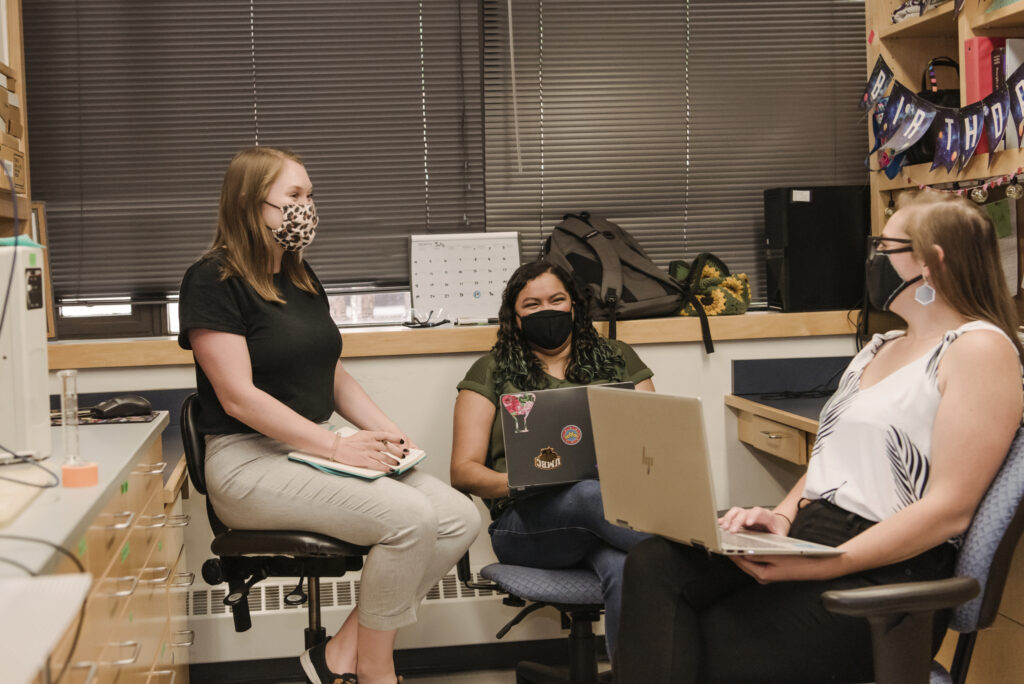
“I think our group meetings are probably much different from other labs,” she explains. “Not only do we discuss our updates, but we bring problems to the group. I like that there’s many different perspectives on solving the problems, so we’re prepared to answer whatever questions come our way later.”
LaCourse supports this environment as he values working together with students rather than students only working for him. “I’m only a guide for this research—I want students to learn lessons,” he says.
Belunis says LaCourse’s mentorship has helped her think carefully about her projects before taking action. “Be willing to be an independent thinker and be willing to be wrong,” she says about being a successful “LaCoursian” researcher. Pitman agrees, adding, “[LaCourse] wants to help us think through the problem because analytical chemistry is about problem solving.”
Reaching the summit
While not as dramatic as watching dry ice float out of a sink, the work Belunis has invested in studying harmful chemicals in everyday life has been worthwhile despite the obstacles.
“This topic is relevant because PFAS are everywhere,” she says. “I like the environmental side of analytical chemistry, so it’s been a great project to work on.” Belunis will continue problem solving in her thesis by developing a method for detecting PFAS in aquaculture. This will help explore if humans are exposed to PFAS through seafood.
Belunis concludes that mental strength is key for continuing graduate education. “You’re not going to know everything, but as long as you have a mindset of ‘Things are hard now, but I’m going to make it,’ you’ll be okay.”
— Karis Barnett ’21, M29, chemistry
*****
Header image: Belunis using liquid chromatography-tandem mass spectrometry (LC-MS/MS) for sample analysis. All photos by Marlayna Demond ’11.
Tags: Chemistry, CNMS, GraduateSchool, Research

